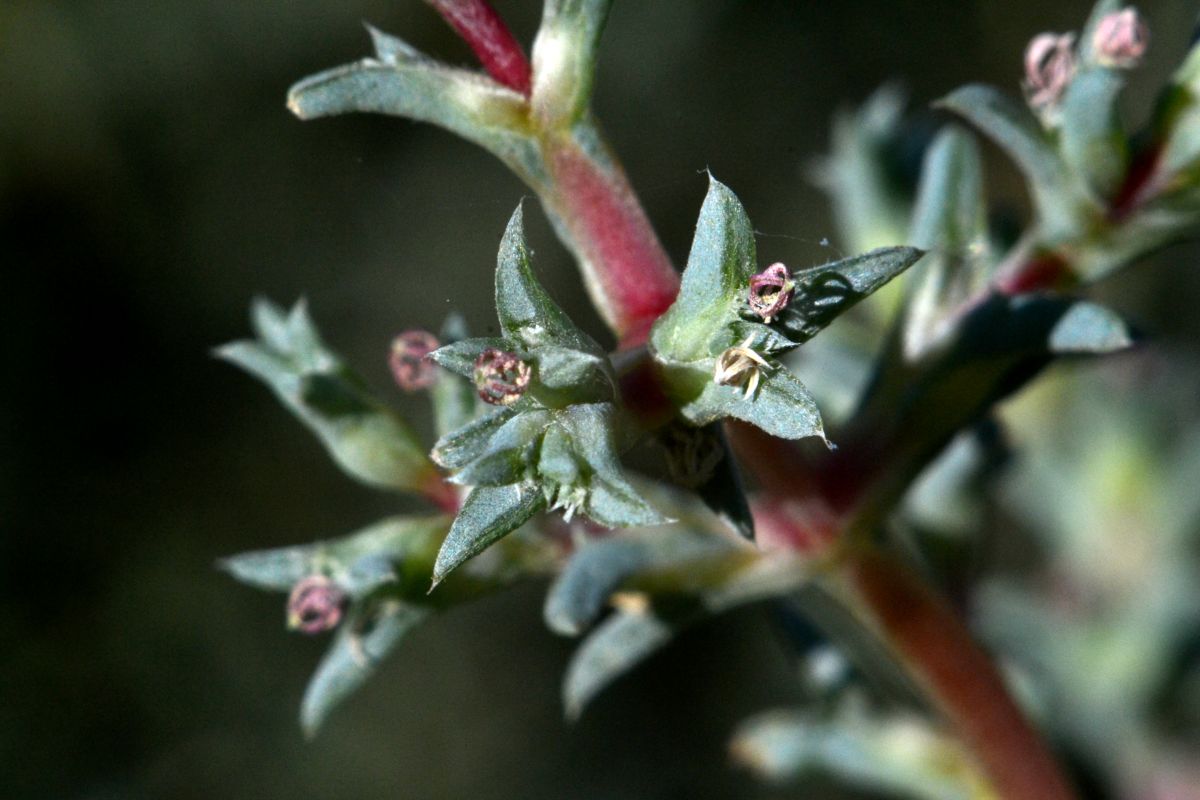PHYTOCHEMICAL ANALYSIS OF SOME KAZAKHSTAN PLANT SPECIES OF THE GENUS PETROSIMONIA, FAMILY CHENOPODIACEAE
UDC 615.322
Abstract
The qualitative composition and quantitative content of the main groups of biologically active compounds of Kazakh plant species of the genus Petrosimonia, collected in the Almaty region, were determined. For the first time a comparative phytochemical analysis of Petrosimonia triandra (Pall.) Simonk. and Petrosimonia brachiata (Pall.) Bunge was presented. Studies of the mineral composition have been carried out. It was revealed that the content of toxic heavy metals (mercury, arsenic, cadmium, lead) in plant raw materials does not exceed the permissible standards. The content of amino acids in plant objects was studied for the first time. A high concentration among amino acids was noted for aspartic (1.246–1.286%) and glutamic acids (2.420–2.502%). This paper presents the results of the analysis of extraction processes with the maximum yield of biologically active compounds from Petrosimonia triandra by two methods: supercritical fluid CO2-extraction and maceration. Gas chromatography-mass spectrometry (GC-MS) was used for the first time in order to detect lipophilic substances in hexane and SCF CO2-extracts from P. triandra. The research results show that these extracts of P. triandra plant are promising sources for obtaining of essential oils, fatty acids and phenolic compounds. Hexane extract from the aerial part of P. triandra exhibits pronounced anti-inflammatory activity.
Downloads
Metrics
References
Flora Kazakhstana [Flora of Kazakhstan], ed. N.V. Pavlov. Alma-Ata, 1960, vol. 3, pp. 306–311. (in Russ.).
Flora SSSR [Flora of the USSR], ed. V.L. Komarov. Moscow-Leningrad., 1936, vol. 6, pp. 316–326. (in Russ.).
Sun W., Ma Z., Zhang X., Yang H., Sun W. Chem. Nat. Compd., 2015, vol. 51, pp. 530–531. DOI: 10.1007/s10600-015-1331-7.
Wang Y., Zhang H., Su X., Yang H., Sun W. Chem. Nat. Compd., 2016, vol. 52, pp. 482–483. DOI: 10.1007/s10600-016-1679-3.
Wang Y., Sun W., Zhang J.H., Xu L.L., Yang H.B. Nat. Prod. Res. Dev., 2015, vol. 27, pp. 251–254. DOI: 10.16333/j.1001-6880.2015.02.011.
Asan-Ozusaglam M., Erzengin M., Darilmaz D.O., Erkul S.K., Teksen M., Karakoca K. Chiang Mai J. Sci., 2015, vol. 42(1), pp. 156–172.
Toktarbek M., Seitimova G.A., Eskalieva B.K., Burasheva G.Sh., Beyatli A., Iqbal Choudhary M. Chem. Nat. Compd., 2019, vol. 55, pp. 547–548. DOI: 10.1007/s10600-019-02738-z.
Toktarbek M., Seitimova G.A., Yeskaliyeva B.K., Burasheva G.Sh., Iqbal Choudhary M., Atia-tul-Wahab. Chem. Nat. Compd., 2021, vol. 57, pp. 536–538. DOI: 10.1007/s10600-021-03407-w.
Gosudarstvennaya Farmakopeya RK. [State Pharmacopoeia of the Republic of Kazakhstan]. Almaty, 2008, vol. 1, 591 p. (in Russ.).
Gosudarstvennaya Farmakopeya RK. [State Pharmacopoeia of the Republic of Kazakhstan]. Almaty, 2009, vol. 2, 802 p. (in Russ.).
Muzychkina R.A., Korul'kin D.Yu., Abilov Zh.A. Kachestvennyy i kolichestvennyy analiz osnovnykh grupp BAV v lekarstvennom rastitel'nom syr'ye i fitopreparatov. [Qualitative and quantitative analysis of the main groups of biologi-cally active substances in medicinal plant materials and phytopreparations]. Almaty, 2004, 288 p. (in Russ.).
GOST 26929-94. Syr'ye i produkty pishchevyye. Podgotovka prob. Mineralizatsiya dlya opredeleniya soderzhaniya toksichnykh elementov. [GOST 26929-94. Raw materials and food products. Sample preparation. Mineralization to de-termine the content of toxic elements]. Moscow, 2010, 12 p. (in Russ.).
GOST 30178-96. Syr'ye i produkty pishchevyye. Atomno-absorbtsionnyy metod opredeleniya toksichnykh elementov. [GOST 30178-96. Raw materials and food products. Atomic absorption method for the determination of toxic ele-ments]. Moscow, 2010, 10 p. (in Russ.).
Atomno-absorbtsionnyye metody opredeleniya toksichnykh elementov v pishchevykh produktakh i pishchevom syr'ye. Metodicheskiye ukazaniya ot 25.12.1992. N 01-19/47-11. [Atomic absorption methods for the determination of toxic el-ements in food products and food raw materials. Guidelines dated 25.12.1992. N 01-19/47-11]. Moscow, 1992, 26 p. (in Russ.).
GOST R 51766-2001. Syr'ye i produkty pishchevyye. Atomno-absorbtsionnyy metod opredeleniya mysh'yaka. [GOST R 51766-2001. Raw materials and food products. Atomic absorption method for the determination of arsenic]. Mos-cow, 2011, 12 p. (in Russ.).
Amiri B., Assareh M.H., Jafari M., Rasuoli B., Arzani H., Jafari A.A. Caspian J. Env. Sci., 2010, vol. 8(1), pp. 79–87.
Butabayeva K.Zh. Khimicheskoye izucheniye osnovnykh grupp BAV kazakhstanskikh rasteniy roda Eurotia i Cerato-carpus: diss. … kand. khim. nauk. [Chemical study of the main groups of biologically active substances of Kazakh plants of the genus Eurotia and Ceratocarpus: diss. … cand. chem. Sciences]. Almaty, 2010, 123 p. (in Russ.).
Bayer R., Mannhold R. Pharmatherapeutica, 1987, vol. 5(2), pp. 103–136.
Stefanska J., Pawliczak R. Mediators of Inflammation, 2008, pp. 1–10. DOI: 10.1155/2008/106507.
Helfand S.L., Werkmeister J., Roder J.C. J. Exp. Med., 1982, vol. 156, p. 492. DOI: 10.1084/jem.156.2.492.

Copyright (c) 2022 chemistry of plant raw material

This work is licensed under a Creative Commons Attribution 4.0 International License.

This work is licensed under a Creative Commons Attribution 4.0 International License.
The authors, which are published in this journal, agree to the following conditions:
1. Authors retain the copyright to the work and transfer to the journal the right of the first publication along with the work, at the same time licensing it under the terms of the Creative Commons Attribution License, which allows others to distribute this work with the obligatory indication of the authorship of this work and a link to the original publication in this journal .
2. The authors retain the right to enter into separate, additional contractual agreements for the non-exclusive distribution of the version of the work published by this journal (for example, to place it in the university depository or to publish it in a book), with reference to the original publication in this journal.
3. Authors are allowed to post their work on the Internet (for example, in a university repository or on their personal website) before and during the review process of this journal, as this may lead to a productive discussion, as well as more links to this published work.











